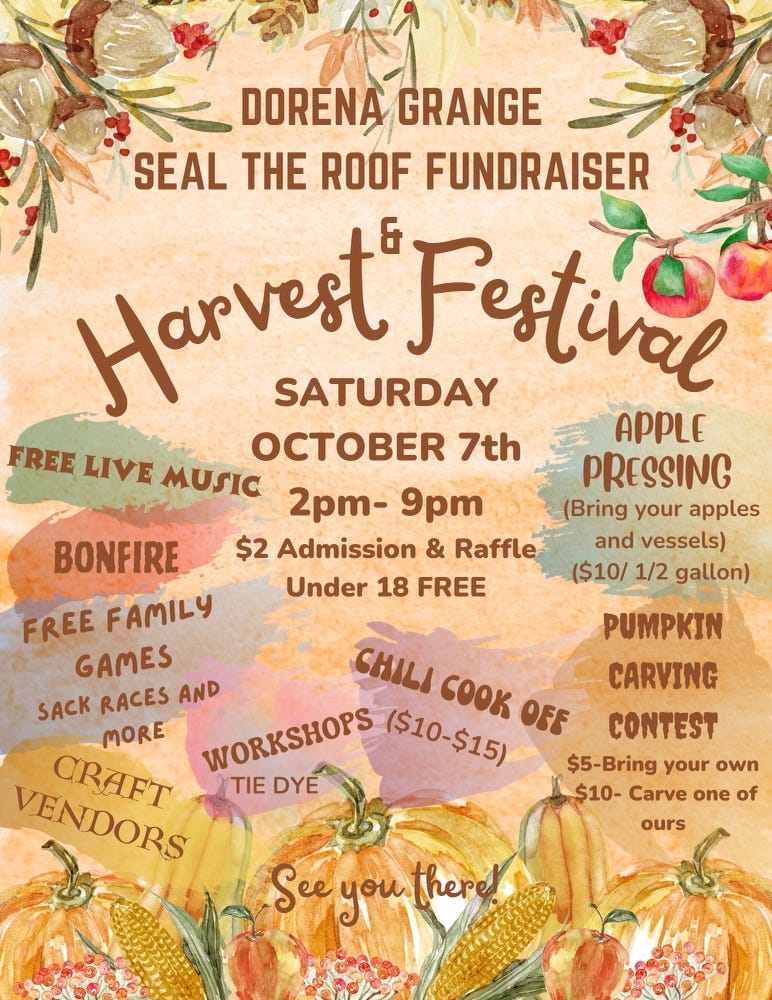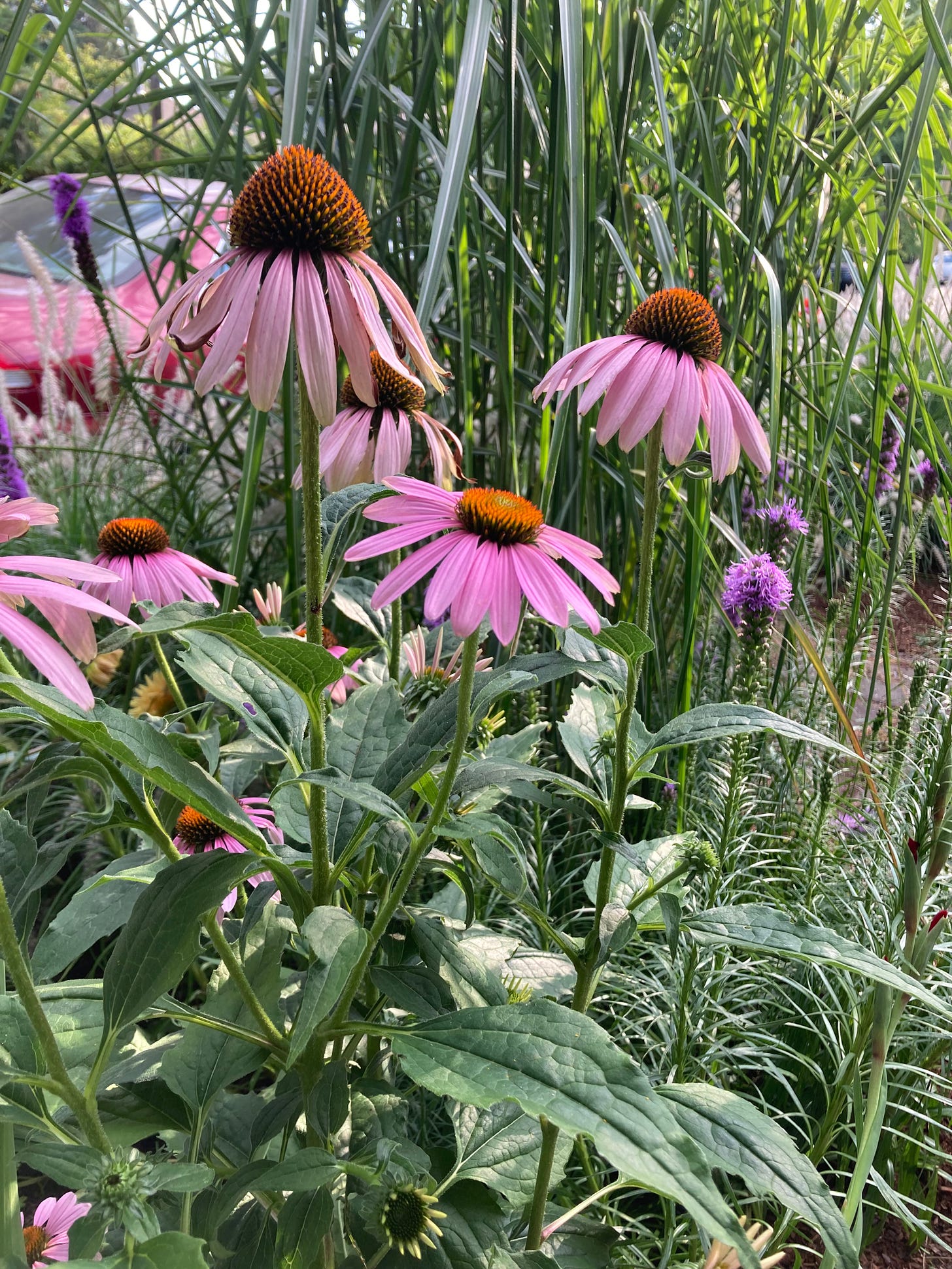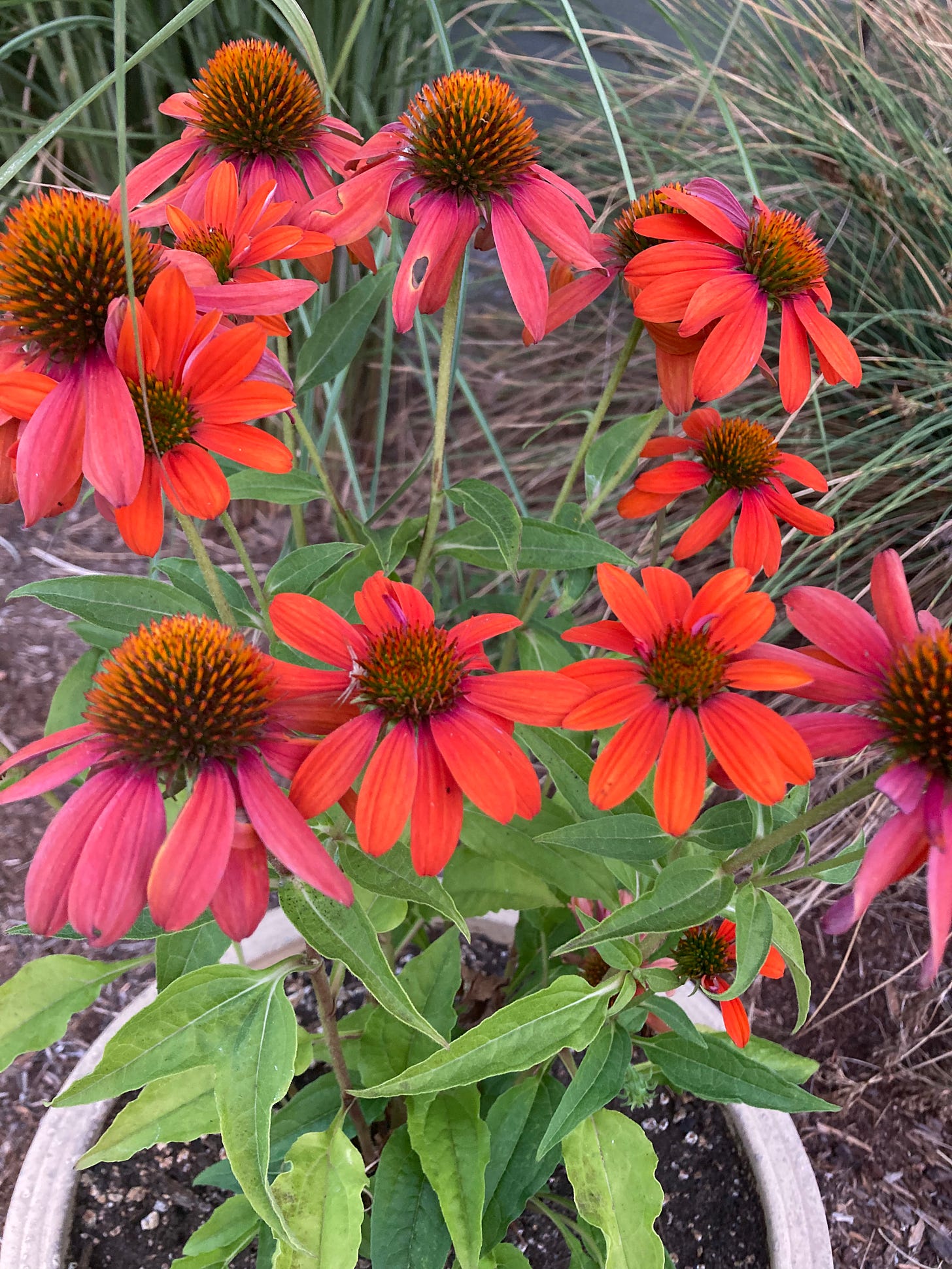Entering Autumn: Herb Walk, Hawthorn, Echinacea
Strengthening the heart, learning to clear infection with echinacea
I will be leading an herb walk at the Dorena Grange Fall Festival in Cottage Grove next Saturday from 3-4pm. Please join us!
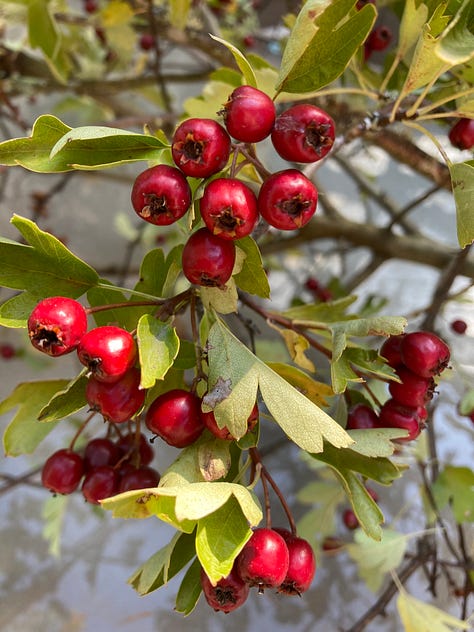

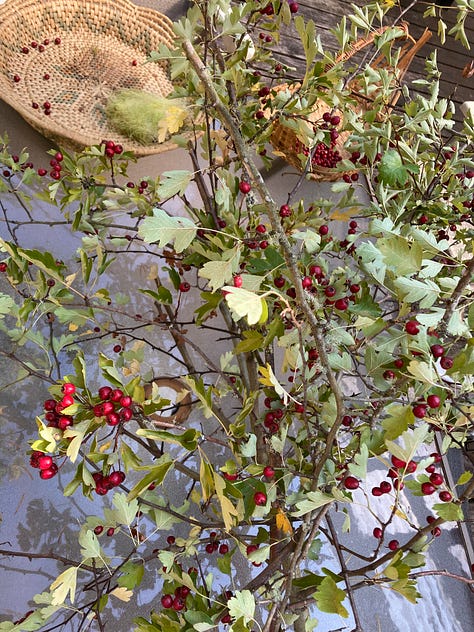


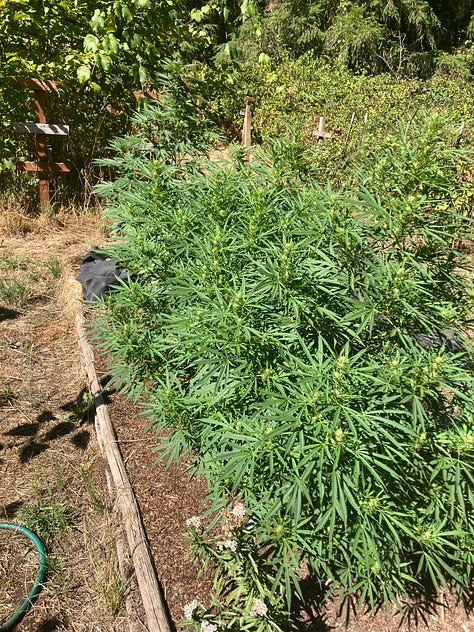
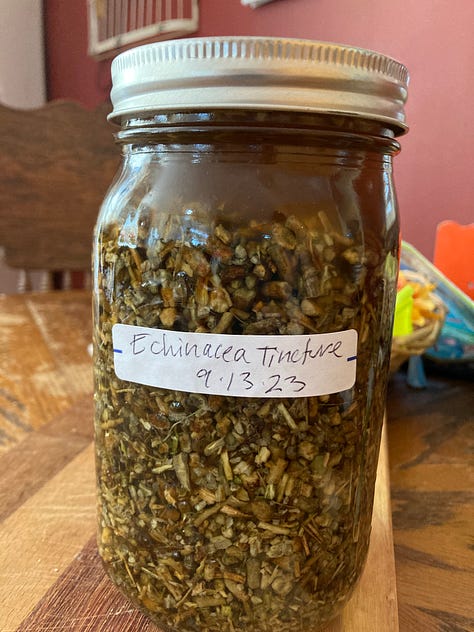
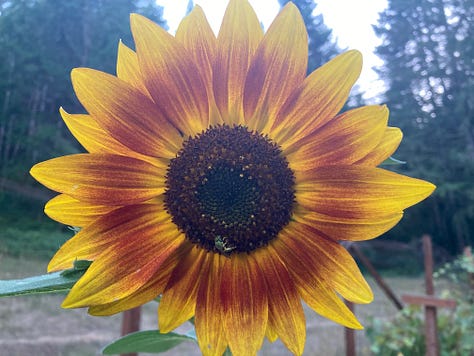

Hawthorn berries, deep red Hawthorn tincture, motherwort in seed, cannabis bed, echinacea root tincture, sunflower + ity bity pollinator, St. Joan’s Wort
The end of summer brings forth memories of collecting berries, apples, and homemade pies. For herbalists it’s a great time to collect hawthorn and elder. Hawthorn (crataegus sp) is known as a heart tonic. It strengthens our precious muscle beating within our chest. It can normalize blood pressure. It is rich in antioxidants and grows all over the world. In Mexico it is known as tejocote and the big fat fruits of the common species found in that region are made into a flavorful beverage, or are sometimes candied with raw sugar called piloncillo. I’ve learned to harvest my own berries in order to make tincture, vinegar, and the ocasional oxymel.
Eagle Song Gardner of Raven Croft has done extensive research on the hawthorn plant. She has traveled widely to meet various species. Her method of making tincture includes both dried berries and frozen (if picked fresh). Combine half frozen and half dried filling a jar about 2/3 full. Top off with 100 proof vodka and let sit about 6 weeks. This can be done with just the dried berries. But beware of filling the jar more than 1/3 full due to water absorption from the vodka. Shake for the first few days.
Side note: yes, it’s important to use 100 proof vodka. High proof alcohol commonly used in tincture recipes is extremely harsh on the body and I do not use it. 80 proof vodka is simply not effective due to the lower alcohol content.
For oxymel combine 1/3 berries, 1/3 apple cider vinegar, 1/3 honey. Shake for a few days and let sit six weeks. Delicious!
I find I turn to hawthorne in times of grief. When the heart needs healing and is extra tender. Along with motherwort hawthorn can help ease heart palpitations. When my husband was feeling cold in his extremities I offered hawthorn. After a couple months of daily use his heart rate had increased from low to normal and he had no more chronic coldness in his feet or hands. As tonics tend to work more slowly it’s good to get to know hawthorn over a period of 6-8 weeks. It’s also a good idea for anyone over 60 to take hawthorn daily to keep an aging heart strong and healthy. Hawthorn is in the apple family. It is loaded with pectin, a gut healing substance. There’s no limit to how much hawthorn you can include in your diet or as a tincture. It’s medicinal, yet food-like as well. Enjoy!
Echinacea is one of my favorite anti-infective herbs. Last year my then six year old daughter became very ill. At first she had flu like symptoms but then she began to complain of pain in her abdomen. Pretty quickly we realized this could be serious and took her to the emergency room. She had appendicitis and required surgery right away. It was a trying time, but after a week in the hospital she was ready to go home. Thankfully I had my herbal first aid kit with me. At the time, I too had been dealing with a respiratory infection. While going through the process of helping my daughter receive care I kept taking echinacea to counter my own respiratory infection. A full dose is one drop per 2 pounds body weight. For an adult weighing 150 pounds that is 75 drops. I was taking this dose (about 3 dropper fulls) nearly every hour that first day in the hospital. The last thing I wanted was to become a patient myself! After my daughter emerged from surgery, and even though she was receiving IV antibiotics for any lingering infection (her appendix had burst), I also began to give her echinacea.
Once home, we were tired, but on the mend, and we kept taking echinacea regularly. It was with this herb I was able to fully kick the infection in my lungs, and I believe it aided my daughter in being able to heal more quickly.
I have used echinacea to treat mastitis (infection of a duct in the breast). My mother used it when dealing with a bacterial infection in her gut that was causing pain and inflammation. It is the go-to herb for our family of five during cold and flu season. And along with anti-viral herbs such as elderberry and hypericum (St. Joan’s Wort) we have for the most part avoided medical interventions.
Echinacea is a systemic anti-infective that increases the amount of white blood cells in the body for countering infection. Frequent high doses can begin to quell most infections within 24 hours.
Situations where echinacea may not be the best choice are when there’s infection in a peripheral part of the body such as the mouth, urinary tract, or the eyes. In these cases we can make use of other anti infectives such as yarrow, another favorite. It is for this reason, and the need for high doses of echinacea that I make my own tincture on an ongoing basis. Last year my family consumed more than a quart of tincture. That’s nearly 32 oz. On the market one ounce of echinacea can cost anywhere from $10-$15. Using dried root bought from a wholesale supplier can save hundreds! I buy dried, cut echinacea angustifolia root for making tincture. If you harvest your own root wait until it is three years old. I just planted my own last year and look forward to making fresh tincture. Keep in mind when using fresh roots that the jar must be filled completely with the chopped root.
Fresh echinacea purpurea is as effective as echinacea angustifolia, but dried it is not.
Also beware that if you buy already made echinacea tincture it may be mixed with other herbs. In the Wise Woman Tradition we use only one herb at a time to properly asses the affects of that herb. In addition, mixing in other herbs with echinacea will dilute its ability to counter infection. This is not to say you can’t also take other herbs along with echinacea or any other herb. However, when making a preparation stick to just one and get to know it on its own first.
Place the dried root into a quart jar filling about 1/3 full. Top with 100 proof vodka and let sit at least six weeks . If allowed to sit one year it will reach maximum strength. Shake for the first few days.
If you buy one pound of echinacea root, you can make a quart of tincture and begin using this as needed. Then you may go on to make another quart three months later and so on so you can ensure that by the following season you will always have tincture available that is at least one year old.
For more about echinacea and other anti-infective/anti-bacterial herbs, and to understand the problematic nature of our over reliance on antibiotics check out Stephen Harrod-Buhner’s book “Herbal Antibiotics.” He goes into depth on various herbs that can help us deal with bacterial infections. As with all herbs, please be mindful to listen to your body, or when helping a child make sure to be clear when medical help is necessary, and do not hesitate to get help if you or your loved ones are experiencing alarming symptoms.
These suggestions are best applied early on when dealing with an infection. This is when herbs are most effective and can turn a situation around. If left to linger, infections can get a deeper hold and are harder to treat with herbs. Persistence is also key. Herbs are not pills. Doses must be repeated. If you sense it’s working great! But keep going. And remember to do your research. Read widely, find herbalists that resonate with you, and of course, listen to the plants. They have much to offer.






